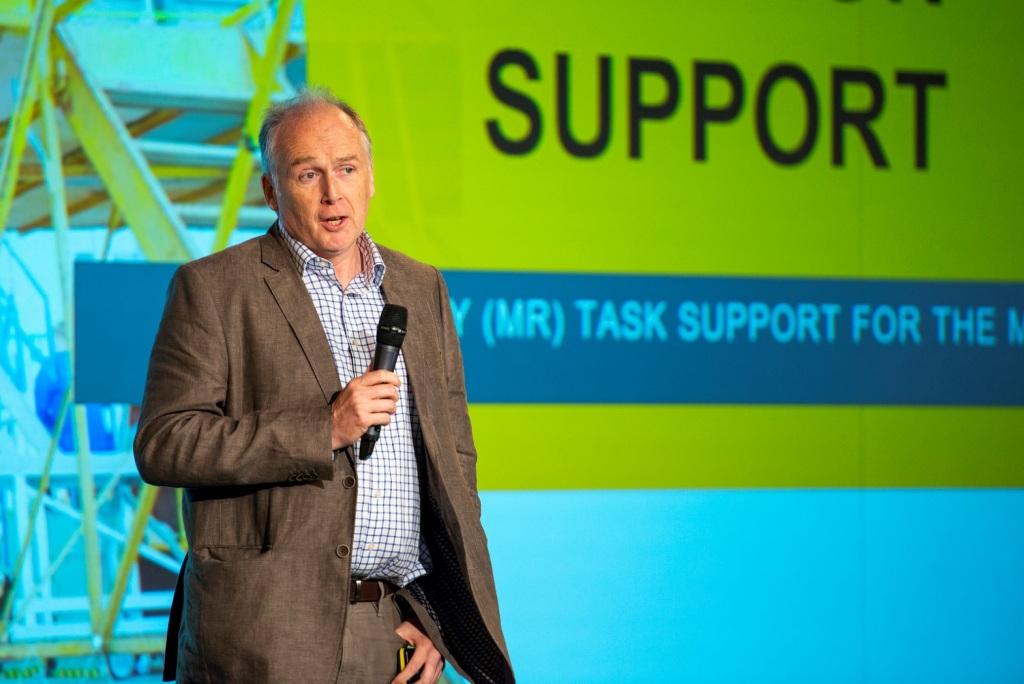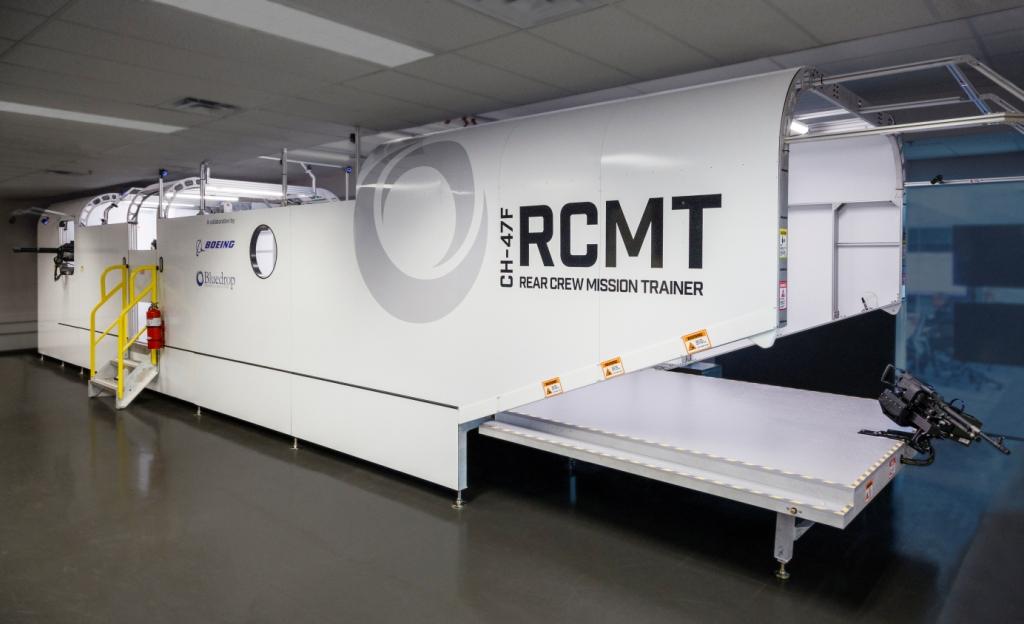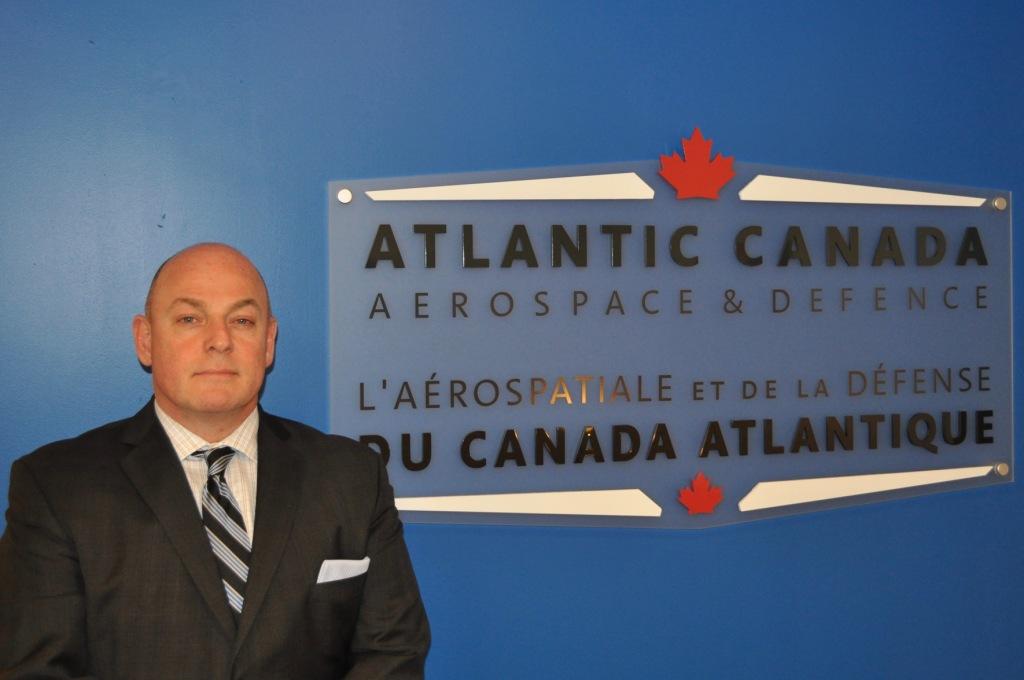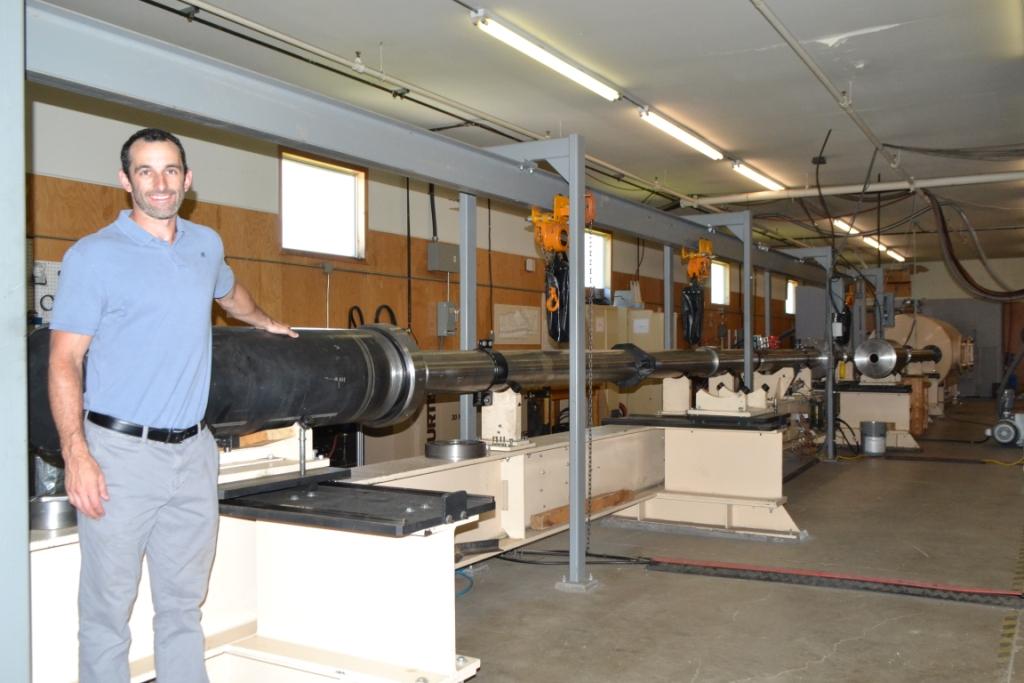ATLANTIC CANADA
BY PETER DIEKMEYER
 The steel-cutting ceremonywhich markedthe start of construction on the Royal Canadian Navy’snew Joint Support Ships which recently took place at Seaspan Shipyards in British Columbia had reverberations across the country. However,the event resonated especially in Atlantic Canadawhere industry players hope to hold a similar ceremony related to the critically important Canadian Surface Combatant program.
The steel-cutting ceremonywhich markedthe start of construction on the Royal Canadian Navy’snew Joint Support Ships which recently took place at Seaspan Shipyards in British Columbia had reverberations across the country. However,the event resonated especially in Atlantic Canadawhere industry players hope to hold a similar ceremony related to the critically important Canadian Surface Combatant program.
“Construction of the CSCships will be the largest naval procurement in Canadian military history,” says Rich Billard, CEO of ACADA (The Atlantic Canada Aerospace and Defence Association), which has been closely monitoring developments. “The programis expected to produce huge benefits in our region, not just for Irving Shipbuilding the prime contractor, but also for a range of supporting players.”
Billard should know. The organization he heads was formed out of four provincial associations to promote Atlantic Canada’s aerospace and defence sector. Finding arguments to get politicians moving on the Canadian Surface Combatant program is a big part of his mandate. The good news is that he has a substantial constituency backing him.
The aerospace and defence industry generates $2.85 billion of annual economic activityin Atlantic Canada according to a recent study and accounts for more than 22,000 jobs. “We are bigger than forestry,” says Billard. “But we don’t always get the credit.”
According to statistics from the Government of Canada’s report on the State of Canada's Defence Industry 2018, and Innovation, Science and Economic Development Canada (ISED), Atlantic Canada is only 6.5% of the Canadian population, but employs 14% of the Defence sector in Canada; and Atlantic Canada employ 5% of Canada's aerospace manufacturing sector and 13% of Maintenance, Repair and Overhaul (MRO) activity.
GENOA DESIGN PROSPECTS TIED TO NSS
Canada’s National Shipbuilding Strategy, which has generated considerable benefits for the region doesn’t always get the credit it deserves, says one expert. “Our naval shipbuilding industry started from literally nothing, notes Leonard Pecore, chair of Genoa Design, a marine production design company based in NL. “We hadn’t built a major vessel here in 25 years. “Today we are rebuilding an industrial base that will last a generation.”
Genoa Design, which prior to 2012 did mostly export work for the US is one such beneficiary. Following the announcement of NSS, Pecore was able to land work (under contract to Alion), to design3D parts for non-combat vessels being built by Seaspan. He now hopes to leverage Genoa’s skills using the ShipBuilder software package to design components for combat ships as well.
MACH 85 MANAGES BALLISTICS LAB
According to Shaun Kennedy, CEO of Mach 85,which provides“technical engineering” expertise, one of the key drivers of Atlantic Canada’s value proposition is its capacity for innovation. That’s particularly true in the defence sector says Kennedy. For example,Mach 85, which also develops 3D measuring software, recently inked a deal to co-manage a ballistics lab located at the University of New Brunswick.
The 20,000 square foot facility, which Kennedy describes as “one of the world’s most advanced,” includes an 80-foot gunthat can shoot projectiles at speeds over 8 kilometers per second. It’s a unique piece of equipment that is ideally suited to doing hypersonic testing on armour and various materials.
“Canadians have been outsourcing much of this work to the United States,” says Kennedy. “This new partnership will enable us to bring some of those mandates back home.”
IMMERSIVE TRAINING FROM MODEST TREE
Modest Tree, which markets software that facilitates the development of 3D and virtual reality scenarios is also heavily focused on driving innovation. The Halifax-based company, which Emily Smits,chief operating officer,co-founded in 2012 has grown to 20 full-time staff.
“We are seeing increased demand for immersive training,” says Smits. “Governments and businesses have been looking at leveraging augmented and virtual reality applications for some time. But lately they have become far more serious in their efforts.”
The release earlier this year of Modest Tree Explorer, which enables users to rapidly create virtual reality presentations that can be viewed using HTC Vive goggles, has also driven growth. Uptake has been quick. The Canadian Defence Academy recently acquired a dozen licences. Growth is expected to continue over the coming year due in part to an increased push into the European defence market.
That said, the rapid pace of the technology advancement in Atlantic Canada brings complications says one expert. “Marketing can be challenging,” admitsKen Howard, defence practice lead for REDspace,whichdevelops software solutions used in complex training and operation environments.
REDSPACE TICKS ALL THE BOXES
“Much of what we do is custom work. That means clients we approach aren’t often sure which technologies best apply to their sector until we sketchout a path with them.”
That challenge is particularly pervasive in Canada’s defence industry which has demonstrated a growing interest in developing areas such as artificial intelligence, data analytics and virtual reality. For example, no one can be sure which software applications the Royal Canadian Navy will need for the Canadian Surface Combatantsuntil the design has been chosen.
On paper,REDspace, which employs nearly 200 technology professionals in its Halifax offices, looks well-positioned to be a key contributor. “We tick all the boxes to be eligible to get offset work,” says Howard. “But you need a compelling value proposition and you have to be able to adjust it accordingly.”
KOGNITIV SPARK DOES AR FOR DEFENCE
Developing a region’s innovation and technology base is all about attracting the best people. That plays to one of Atlantic Canada’s greatest strengths: its quality of life. Soldiers, sailors and industry players who visit the  region often end up wanting to stay there.Such was the case with Duncan McSporran, a British Army officer who did a three-year stint running Phase II officer training at the Combat Training Center in CFB Gagetown.
region often end up wanting to stay there.Such was the case with Duncan McSporran, a British Army officer who did a three-year stint running Phase II officer training at the Combat Training Center in CFB Gagetown.
McSporranco-foundedaugmented reality player Kognitiv Spark, after his tour was over, in large part because he wanted to stay in New Brunswick. “My family loved the province too,” says McSporran.
“So in the end it was an easy choice.” Kognitiv Spark’s RemoteSpark technology facilitatesthe use of holographic AR visualization by leveraging a Microsoft HoloLens in the field or on job sites. Kognitiv Spark’s real added value is that it can take existing CAD files and other data and drop it into a “funnel” which takes it to its ultimate destination securely.
“We are not a content creator,” says McSporran. “We provide tools that enable AR players to deploy their own content more efficiently and effectively.” McSporran is under contract to set up what he calls a “living lab” which will enable the Royal Canadian Air Force and the Canadian Army, to test and implement the technology in an actual real time environment.
Kognitiv Spark was recently named a finalist by Microsoft Canada for the tech giant’s 2018 Impact Awards, which recognizes outstanding work of companies to deliver virtually seamless solutions to customers. “For our team, the Microsoft Impact Award nomination is a significant recognition of all the hard work done in building a product that makes a real difference for industrial field work operations and bringing it to market,” said Kognitiv Spark CEO, Yan Simard.
SOLACE POWER WORKSWITH LOCKHEED MARTIN
One recurring theme when discussinginnovation is the importance of the Canadian government’s concrete recognition of the crucial role played by small and medium sized businesses in sparking the process in its industrial and technical benefits policy. One beneficiary of this policy is Solace Power, which makes components that enable users to power-up electronic devices wirelessly.
According to CEO,MichealGotlieb, the company’s resonant capacitive coupling technology has numerous potential defence applications. “It can be used to keep drones in the air for much longer periods of time as they would not need to be brought down to charge up,” says Gotleib. “But the applications are limitless.We provide the charging products and our customers figure out the best ways to use them.”
Last year Solace Power landed a $2.3 million investment from Lockheed Martin Canada that will enable it to further develop its research. According to Gottleib, the funding was in large part tied to Lockheed’s win of an in-service support contract related to 17 CC-130J Super Hercules transport aircraft that Canada bought in 2010.
Lockheed Martin’s investment in Solace has far broader implications as the company is a leading candidate for major systems work on the new Canadian Surface Combatant ships. If Lockheed does manage to close the deal, it will almost certainly be open to further investment ideas from Solace Power and many other regional innovators.
BLUEDROP TRAINING & SIMULATION RAMPS UP
Expected Canadian government action on the Canadian Surface Combatant program later this year couldn’t come at a better time for many sector players. “We recently took a short-term hit to revenues. But such fluctuations come with the territory in the defence world,” says Jean-Claude Siew, vice-president (technology & simulation) at Bluedrop Training & Simulation, which employs 110 staff at its Halifax facility. “Several projectshave been pushed back until later in the year but we are seeing signs of business pickingup already.”
Siew cites the FWSAR (Fixed Wing Search and Rescue) program as one initiative that has seen growing momentum. Bluedropis also ramping up work to develop a virtual reality rescue hoist simulator for the multi-role CH-148 Sikorsky Cyclone helicopters, which are replacing Canada’s old Sea Kings. Bluedrop also recently landed $7.6 million in funding to enable it to adapt mobile and gaming technologies such as virtual and augmented reality to improve air and marine crew training products.
“Sector trends continue to run heavily in our favour,” says Siew. “Defence organizations around the world, which regard training as a crucial part of their operations, are strapped for cash. They know that increasing the use of simulation is one of the best ways to stretch those existing dollars.”
STANDARD AERO EXPANDS IN PEI
Atlantic Canada’s aerospace sector got a strong vote of confidence when StandardAerofinalized its purchase of Vector Aerospace, which operatesa large engine overhaul facility in Prince Edward Island. The Summerside localewas designated as a centre of excellence for work on turboprop engines, when further work was transferred there after the companies merged. More good news came soon after when the federal and provincial governments agreed to kick in $5 million to help expand the facility.
According to Bryn Hyra, a business development manager at StandardAero, the companyemploys 465 highly skilled technicians at the PEI site, which primarily supports commercial work. However, StandardAero has been increasingly pursuing defence opportunities as well, including work for the Greek government. The company will be bidding on defence mandates in other jurisdictions in thecoming years.
FORCE MULTIPLIER FROM PAL AEROSPACE
PAL Aerospacehas also been busy says Jake Trainor, its COO, finalizing deployment of its new Force Multiplier intelligence, surveillance and reconnaissance solution. During coming months,the company will also be bidding on new mandates related to Canada’s Department of Fisheries and Oceansaerial surveillance and enforcement program and on international aircraft modification contracts.
PAL Aerospace continues to pursue work on the Fixed Wing Search and Rescue Aircraft program for which it is providing in-service support. Trainor credits Canada’s Industrial and Technical Benefits policy as a key element in its success with the project.
GEARING UP FOR DEFSEC ATLANTIC
Rich Billard, for his part, won’t be getting much time to take it easy from his duties at ACADA. He is currently working with Public Services and Procurement Canada as part of a supplier advisory council to help streamline government purchases.
ACADA’s CEO is also trying to line up funding related to the federal government’s Atlantic Trade and Investment Growth Strategy for a trade mission to Euronaval. The goal is to line up key playersto market the region’s naval defence capabilities overseas.
As if that weren’t enough, Billard must also oversee preparations for ACADA’s involvement in the DEFSEC Atlantictrade show which will take place in Octoberthis year.
“We are lining up a high-profile defence sector speaker at the annual ACADA Gala Dinner at DEFSEC,” says Billard. “I can’t tell you who it is. But it is going to be good.”
Peter Diekmeyer is CDR’s Quebec Bureau Chief



